Lower back pain is a very common health problem worldwide and a major cause of disability — affecting performance at work and general well being. Approximately 65-80% of adults will experience an episode of low back pain at some point in their lives.
Spinal stabilization exercises have been shown to be a very effective intervention for patients with lower back pain. Biomechanically, we rely on the muscles that attach to the spine to take daily pressures off the spine.
However, if these muscles are weak, imbalanced or not working properly then the stress that goes through us every day ends up being placed on the static structures of the spine (discs, ligaments, joints) potentially leading to injury within the spine. By getting the muscles working correctly we can take the pressure off the spine, making it a lot more durable.
Here are 5 exercises for lower back pain and back pain treatment that you may not have encountered before!
1. Core Bracing
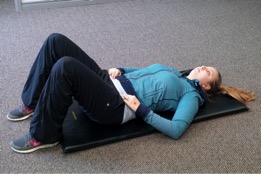 This exercise is all about gaining awareness and activating the muscles appropriately, and less about feeling “the burn”.
This exercise is all about gaining awareness and activating the muscles appropriately, and less about feeling “the burn”.
- Lie on your back with your knees bent. Maintain a neutral lumbar spine i.e. don’t flatten your low back into the floor or conversely arch your back off the floor.
- Place your hands on the insides of your hips bones feeling for the muscles tensing under your hands.
- Maintain a normal breathing pattern and, without movement in your spine, contract your abdominals as if someone was about the punch you in the stomach. There should be no geometric change in your abdominals, meaning you are not sucking your belly button in or pushing your abdomen out.
- The aim is to activate the muscles without any change in position or breathing pattern. Try holding for 5-10 seconds at a time, for 5-10 reps.
2. Half Kneeling Hip Flexor Mobility Stretch
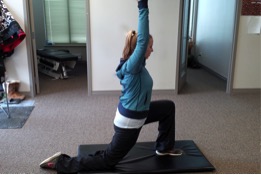 The hip flexor, known in the medical world as the “Psoas”, is a powerful muscle that attaches to the vertebrae in the mid-low spine and runs across the pelvis to attach to the femur. If this muscle is tight and short, it can pull on your spine and cause low back pain.
The hip flexor, known in the medical world as the “Psoas”, is a powerful muscle that attaches to the vertebrae in the mid-low spine and runs across the pelvis to attach to the femur. If this muscle is tight and short, it can pull on your spine and cause low back pain.
The best way to mobilize this muscle is to stretch it through a full range of motion.
- Begin in a half kneeling position with your knee on a cushion. Begin to lunge forward, driving your hip forward while also raising the same arm overhead.
- Lunge as far as possible to feel a comfortable stretch in the front of your hip, hold for 2-3 seconds at the end point and then reverse to the original half kneeling upright position.
- Be sure not to arch your back at the end of the movement but rather keep a nice neutral spine.
- Try performing 5-10 reps on each side, 2 -3 sets.
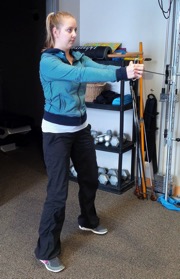 3
3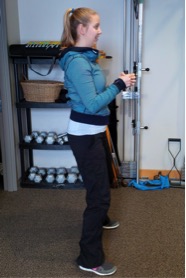 . Pallof Press
. Pallof Press
This is called an “anti-rotation” exercise, meaning you are resisting the rotational pull of the cable or band. Rotation is a common way to injure your low back and thus training your muscles to be strong at resisting rotation is a good injury prevention strategy.
This exercise will target the entire core, including the shoulder and hip complexes.
- Standing to the side of the cable or band, assume an athletic position: feet shoulder width apart, chest out, and shoulders back. Bring the cable or band under tension held at your chest height.
- Fully extend your arms, resisting the lateral tension, pause for a 1-2 second count, and then return back to the starting position. Maintain a normal breathing pattern.
- The more narrow your foot stance, the harder the exercise. If you’re having a hard time keeping your hips/pelvis from moving, you’re too narrow and/or using too much weight.
- Aim to perform 5-10 reps per side, for 2-3 sets.
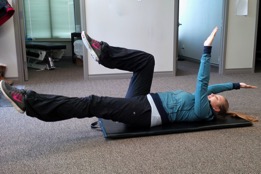 4
4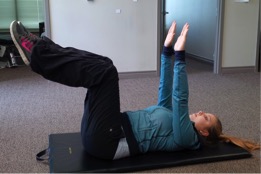 . Dead Bug
. Dead Bug
Dead bugs are a fantastic way to enhance motor control and engage the lumbo-pelvic-hip stabilizers to do their job.
- Begin lying on your back on the floor. Bring your knees up to form a 90 degree bend at your hips. Arms outstretched over your shoulders.
- Brace your core (see exercise #1) and slowly lower opposite arm and leg – controlled, in an effort to resist extension – while exhaling. Many don’t think of this part, but with all the air exhaled out, you now have nothing to help stabilize your spine except the muscles themselves.
- Hold the end position until you have fully exhaled, then inhale as you bring your arm/leg back to the starting position. Repeat on the other side.
- Common mistakes are moving too fast, an excessive arch in your lower back, and your rib cage flaring out.
- Aim for 2-3 sets of 5-8 repetitions per side.
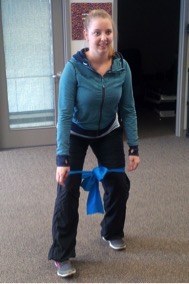
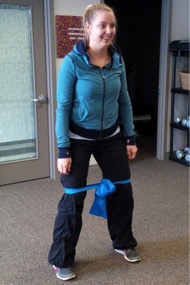 5. Monster Walk
5. Monster Walk
The muscles that surround your pelvis are a major contributor to the support system of your spine. The monster walk aims to strengthen this set of muscles (the glutes in particular).
- Place a band around both knees or, for added intensity, place the band around both ankles. There should be enough tension that the band is tight when your feet are shoulder width apart.
- To begin, squat ¼ of the way down and take short steps forward alternating your left and right foot while maintaining your feet shoulder distance apart.
- After several steps, do just the opposite and walk backward to where you started.
- The hardest version of this exercise is having the band placed around your forefoot.
- Aim for 10 steps forward and backward on each foot for 2-3 sets.
As with all exercise programs, these low back stretching and strengthening exercises should be preceded by warm-up and followed by cool-down activities. It is advisable to always consult a medical professional prior to beginning any exercise program. If you feel pain or aggravation, it is best to consult one of our practitioners here at Shift.
To start treating your lower back pain today, call us at (519) 822-2226 or email us.
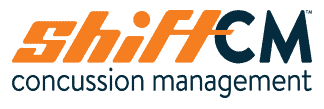
Debashri
I have read most of the blog post written under the title of lower back pain was not that good as your post is. Although we know back pain can affect any person of any age but it mostly come to see in old age people. So keeping that in mind your exercising tips and ways are simple. Thanks for giving your time to us.
Grande Prairie Physiotherapy
Very informative and well written article. Yes, I am totally agree with you about “back pain is a common health problem worldwide” that cause back pain problems and these exercises are very effective to get relief from lower back pain. Thanks for sharing a valuable information!
theshift
We’re glad you enjoyed it!
living Thearpy
The best solution for lower back pain is a physical therapy can help athletes and other patients recover from physical injuries, surgeries, accidents, and illnesses including pain attributed to the lower back. To help you regain mobility and reduce your back pain, listed below are some of the most common lower back rehabilitation exercises.
Thanks.
theshift
Thank you for this information!